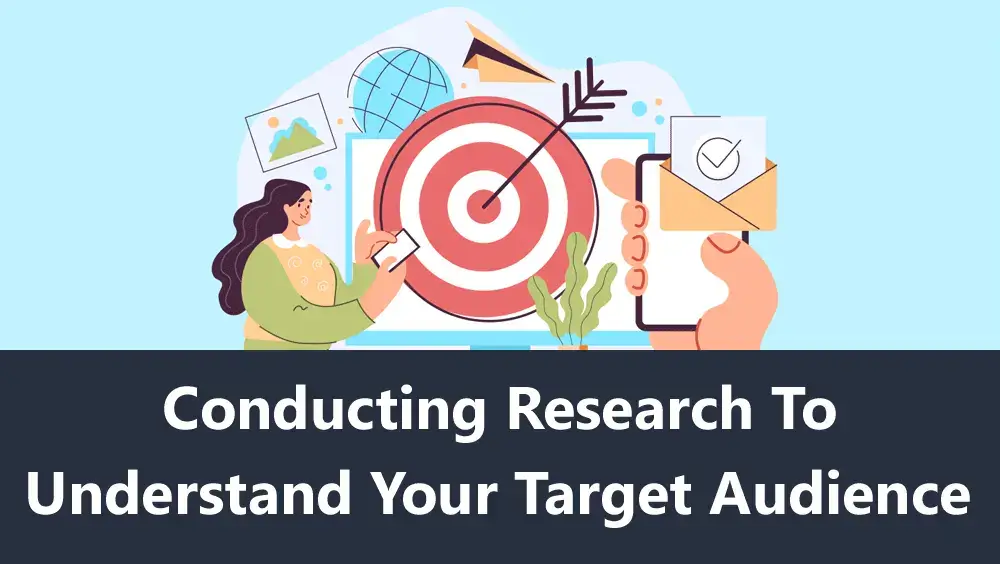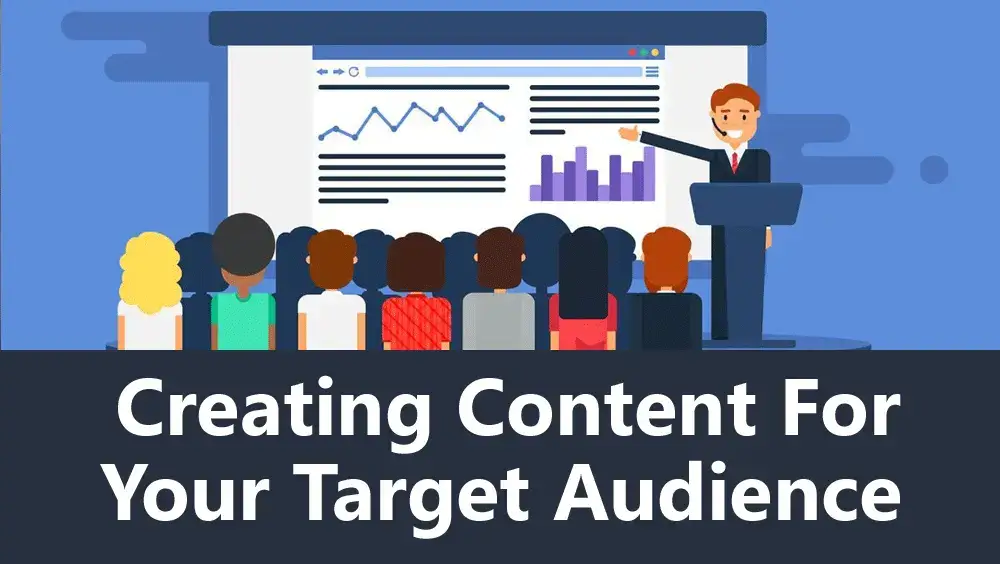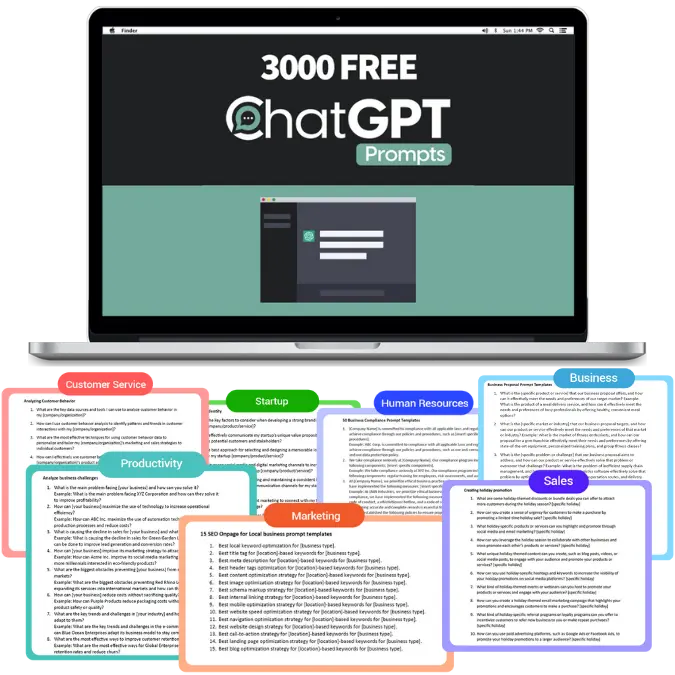As a content creator, you might think that creating content that you love is enough. But it’s not. You need to create content that your audience loves too. And the key to doing that is knowing your target audience. In this guide, we’ll walk you through the process of identifying your target audience for content creation, so you can create content that resonates with your audience.
Part 1: Defining Your Target Audience

The first step in identifying your target audience is defining it. You need to know who you’re creating content for. Let’s start by defining some key terms.
Demographics: This includes characteristics such as age, gender, income, education, occupation, and location. Understanding your audience’s demographics can help you create content that speaks to their specific needs and interests.
Psychographics: This includes characteristics such as personality, values, interests, and attitudes. Understanding your audience’s psychographics can help you create content that resonates with their values and interests.
Buyer Personas: Buyer personas are fictional representations of your ideal customers. They’re based on research and data about your target audience’s demographics, psychographics, behavior, and pain points. Understanding your buyer personas can help you create content that speaks directly to your ideal customers.
Let’s look at an example of how defining your target audience can help you create effective content. Imagine you’re a nutritionist who wants to create content about healthy eating. You might start by defining your target audience as women between the ages of 25 and 45 who are interested in health and wellness. With this information, you can create content that speaks directly to this audience’s specific needs and interests, such as healthy meal plans for busy moms or tips for healthy eating on a budget.
Part 2: Conducting Research to Understand Your Target Audience

The second step in identifying your target audience is conducting research to gain insights into their needs, preferences, and behavior. There are many research methods you can use, including surveys, focus groups, and social media analysis.
Surveys: Surveys are a great way to gather information about your target audience’s preferences and behavior. You can use tools like SurveyMonkey or Google Forms to create online surveys and distribute them to your audience via email, social media, or your website.
Focus Groups: Focus groups are a more in-depth research method that involves gathering a small group of people together to discuss a specific topic. You can use focus groups to gather insights into your target audience’s needs, pain points, and preferences.
Social Media Analysis: Social media platforms like Facebook, Twitter, and Instagram provide a wealth of data about your target audience’s behavior and interests. You can use tools like Hootsuite or Sprout Social to analyze your social media data and gain insights into your audience’s preferences and behavior.
Let’s look at an example of how research can help you understand your target audience. Imagine you’re a fashion blogger who wants to create content about sustainable fashion. You might conduct a survey to gather information about your audience’s attitudes toward sustainable fashion, their purchasing behavior, and their preferred brands. With this information, you can create content that speaks directly to your audience’s interests and values, such as reviews of sustainable fashion brands or tips for sustainable shopping on a budget.
Part 3: Creating Content for Your Target Audience

The third step in identifying your target audience is creating content that resonates with them. You need to use the insights you gained from defining and researching your target audience to create effective content. Here are some tips for creating content that resonates with your target audience:
Tailor Content to Different Segments: Your target audience is not a monolith. They have different needs, interests, and pain points. You need to create content that speaks directly to different segments of your target audience. For example, if you’re a travel blogger creating content about budget travel, you might create content that speaks to different segments of your audience, such as students, families, and solo travelers.
Use Language That Resonates: Use the language and terminology that your target audience uses. This will help your content resonate with them and show that you understand their needs and interests. For example, if you’re creating content for a tech-savvy audience, use technical jargon and terminology to show that you’re an expert in your field.

Provide Value: Your content should provide value to your audience. It should help them solve a problem, answer a question, or provide entertainment. For example, if you’re a beauty blogger, your content might provide tutorials on how to apply makeup or reviews of different beauty products.
Measure Effectiveness: Finally, you need to measure the effectiveness of your content with your target audience. Use analytics tools like Google Analytics or social media analytics to track your content’s performance. This will help you understand what’s resonating with your audience and what’s not, so you can adjust your content strategy accordingly.
Let’s look at an example of how to create effective content for your target audience. Imagine you’re a startup founder creating content about entrepreneurship. Based on your research, you know that your target audience is interested in learning about fundraising. You might create content that speaks directly to this interest, such as a guide to fundraising for startups or interviews with successful startup founders who have raised funding.
Knowing your target audience is key to creating effective content. By defining your target audience, conducting research to understand their needs and preferences, and creating content that resonates with them, you can create content that engages and delights your audience. Remember to tailor your content to different segments of your audience, use language that resonates, provide value, and measure effectiveness. By following these tips, you’ll be well on your way to creating content that your audience loves.

Here are the main points of the article, along with a brief description of each section:
1.Introduction: The introduction explains the importance of knowing your target audience for content creation and provides an overview of the MECE framework that will be used throughout the article.
2. Defining Your Target Audience: This section defines key terms like demographics, psychographics, and buyer personas, and explains how each of these factors can be used to define your target audience. Real-life examples are provided to illustrate the importance of defining your target audience.
3. Conducting Research to Understand Your Target Audience: This section explores different research methods, such as surveys, focus groups, and social media analysis, that can be used to gain insights into your target audience’s needs, preferences, and behavior. Real-life examples are provided to show how research can be used to understand a target audience.
4. Creating Content for Your Target Audience: This section provides tips for creating content that resonates with your target audience, including tailoring content to different segments, using language that resonates, providing value, and measuring effectiveness. Real-life examples are provided to show how to create effective content for a target audience.
5. Conclusion: The conclusion summarizes the key points of the article and emphasizes the importance of knowing your target audience for creating effective content. A call to action is included to encourage readers to start identifying their own target audience.

Here’s an action plan based on the article:
1. Define Your Target Audience: Start by defining your target audience based on demographics, psychographics, and buyer personas. Use real-life examples to help you understand how each of these factors can be used to define your target audience.
2. Conduct Research: Use research methods such as surveys, focus groups, and social media analysis to gain insights into your target audience’s needs, preferences, and behavior. Create surveys and distribute them through your website or social media to gather information. Join social media groups related to your topic to get insights on what people are talking about.
3. Create Content: Use the insights gained from defining and researching your target audience to create content that resonates with them. Tailor your content to different segments of your audience and use language that resonates with them. Provide value by solving problems or answering questions, and measure the effectiveness of your content.
4. Revise and Revisit: Revisit your target audience research periodically and adjust your content strategy accordingly. Use analytics tools to track your content’s performance and identify areas for improvement. Use customer feedback to improve your content strategy.
By following this action plan, you’ll be able to create content that resonates with your target audience and drives engagement. Remember to always keep your audience in mind and provide value through your content.

Here are 10 frequently asked questions about identifying a target audience for content creation, along with their answers:
1. What is a target audience?
A target audience is a group of people who are most likely to be interested in your content, products, or services. They share certain characteristics, such as demographics, psychographics, or interests, that make them more likely to engage with your content.
2. Why is it important to know your target audience?
Knowing your target audience is important because it helps you create content that resonates with them. By understanding their needs, preferences, and behavior, you can create content that speaks directly to them and drives engagement.
3. How do I define my target audience?
You can define your target audience by considering their demographics, psychographics, and buyer personas. Conduct research to gain insights into their needs, preferences, and behavior, and use this information to create a profile of your ideal customer.
4. What research methods can I use to understand my target audience?
You can use research methods such as surveys, focus groups, and social media analysis to gain insights into your target audience’s needs, preferences, and behavior. Create surveys and distribute them through your website or social media to gather information. Join social media groups related to your topic to get insights on what people are talking about.
5. How do I create content that appeals to my target audience?
To create content that appeals to your target audience, you need to tailor your content to different segments of your audience, use language that resonates with them, provide value, and measure effectiveness. Use the insights gained from defining and researching your target audience to create effective content that resonates with them.
6. Should I create different types of content for different segments of my target audience?
Yes, you should create different types of content for different segments of your target audience. Each segment has different needs, interests, and pain points, so you need to create content that speaks directly to each segment.
7. How do I measure the effectiveness of my content with my target audience?
You can measure the effectiveness of your content with your target audience by using analytics tools like Google Analytics or social media analytics. These tools can help you track your content’s performance, identify areas for improvement, and adjust your content strategy accordingly.
8. How much research is necessary to understand my target audience?
The amount of research necessary to understand your target audience depends on your specific situation. Generally, the more research you do, the better understanding you’ll have of your target audience. However, you don’t want to spend too much time researching and not enough time creating content.
9. How often should I revisit my target audience research?
You should revisit your target audience research periodically, especially if there are changes in the market or your business. Revisit your target audience research every 6-12 months to ensure that your content strategy is still relevant and effective.
10. Can I have more than one target audience?
Yes, you can have more than one target audience. However, you need to create different types of content for each target audience and ensure that your content speaks directly to each segment. Make sure you define each target audience clearly and conduct research to understand their needs and preferences.
Conclusion
Identifying your target audience is crucial for creating content that resonates with your audience. By defining your target audience based on demographics, psychographics, and buyer personas, conducting research to understand their needs and preferences, and creating content that speaks directly to them, you can create effective content that drives engagement. Tailoring your content to different segments of your audience, using language that resonates with them, providing value, and measuring effectiveness are some key ways to create content that appeals to your target audience.
Identifying your target audience is a key factor in creating effective content. Knowing your target audience allows you to create content that resonates with them and drives engagement. Defining your target audience, conducting research, and creating content that speaks directly to them are all important steps in identifying your target audience. Remember to tailor your content to different segments of your audience, use language that resonates with them, provide value, and measure effectiveness to create content that appeals to your target audience. By following these tips, you’ll be well on your way to creating content that your audience loves.




